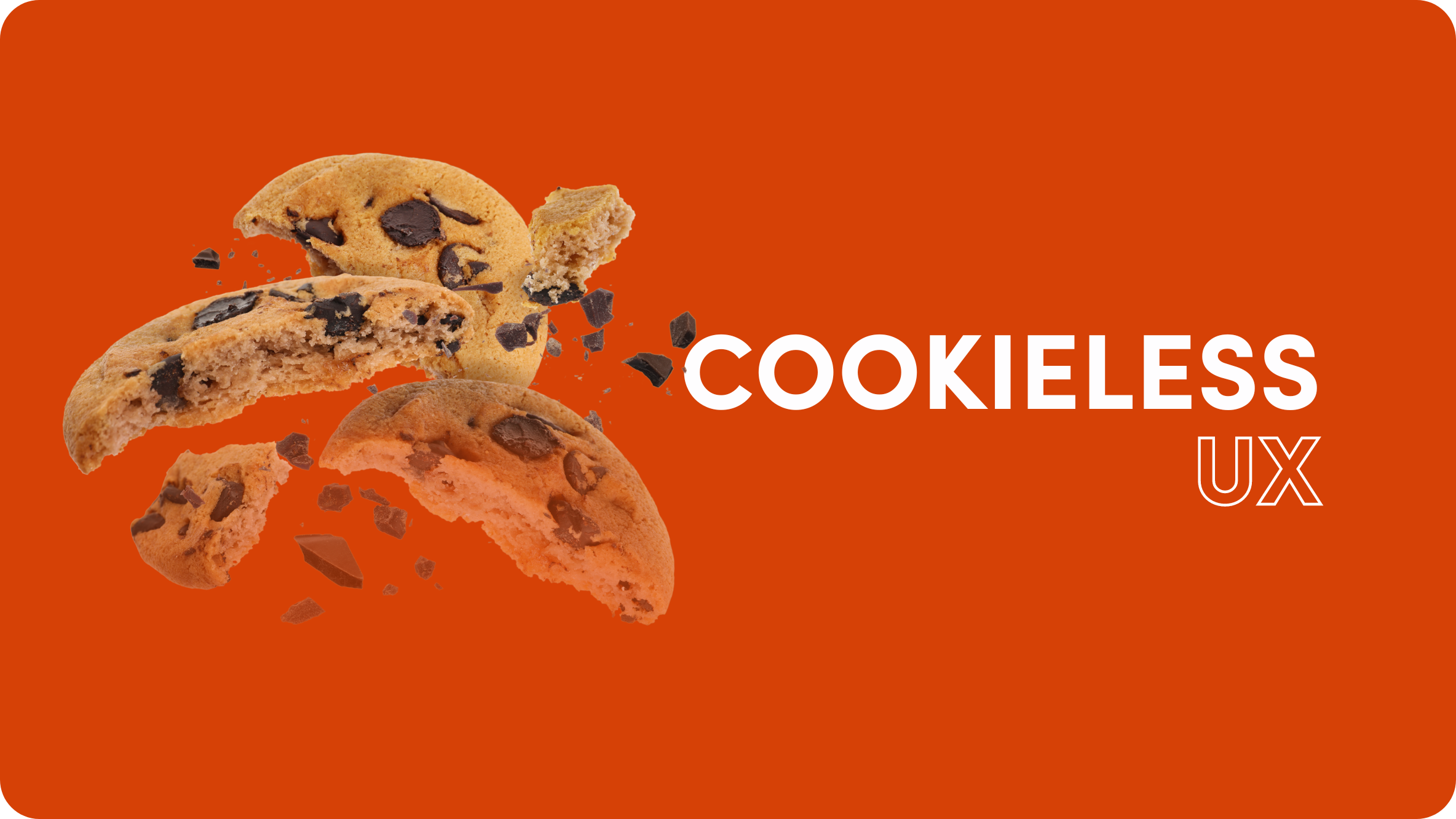Trends in B2C Technology Advertising: How to Succeed in the Consumer Electronics Space

It’s 2023 and the world has moved beyond good-old consumer electronics to digital experiences.
Forget the alarm clock. There’s a phone app for that. No need to pull the string on the overhead ceiling fan. Just use the smart remote.
From gaming consoles to wearable fitness devices, laptops, smart home accessories, and of course, the ever-present smartphone, the B2C technology industry is more complex and competitive than ever before.
Let’s take a look at some of the marketing and advertising trends in the B2C technology industry that can inform your next campaigns.
1. Data-Driven Personalization
A recent McKinsey report revealed that brands who nail marketing personalization generate as much as 40% more revenue.
Thanks to massive advances in data-based marketing, it is possible to use personalization to grab the attention of the target audience. For example, Facebook serves personalized ads to its users based on their interests and browsing behavior. By analyzing a user’s likes, comments, and other interactions, Facebook’s algorithms generate personalized ads that are tailored to each individual user, resulting in higher click-through rates and conversions for advertisers.
With Outbrain, B2C tech advertisers can also leverage user data to create a more personalized experience. For example, if a user frequently reads articles about fitness and healthy eating, Outbrain’s algorithms can serve ads for fitness apps or sports headphones. Outbrain also takes into account the user’s location, demographics, device, and other data points to personalize the experience even more.
Ultimately, data-driven personalization improves ad performance, as advertisers are able to target their content to specific audience segments based on their interests and behaviors, resulting in higher conversions and ROI.
Check out these examples of successful digital B2C tech campaigns that used data-driven personalization to get results:
Vivo
Electronics brand Vivo partnered with recommendation platform Outbrain to drive performance outside of traditional social and search channels. Vivo connected with the most relevant audiences and drove deeper engagement by focusing on user interests and privacy, ultimately boosting their return on ad spend (ROAS).
Samsung
Diversified traffic sources and tested native ads, leveraging Outbrain’s recommendation technology and premium publisher network to reach new audiences and resonate with early adopters.
2. Micro-Influencer Marketing: Genuine Connections and Active Involvement
Micro-influencer marketing is a valuable alternative to traditional influencer marketing.
Instead of partnering with well-known celebrities who have millions of followers, businesses can team up with micro-influencers. These are individuals with a smaller, yet dedicated following that often have a stronger sense of authenticity and engagement.
The real value of micro-influencer marketing lies in the trust and loyalty these influencers have with their audience. Their followers feel a more personal connection with them, leading to more engagement and meaningful interactions.
To find the right micro-influencers for your brand, start by researching your target audience’s interests and habits. Identify influencers who align with your brand’s values and share content that resonates with your ideal customers. Reach out to them with a genuine partnership proposal that highlights the mutual benefits of working together.
A great example of a successful consumer tech micro-influencer campaign could be a smartphone brand partnered with photography enthusiasts to showcase the phone’s camera capabilities. These micro-influencers shared their experiences with the phone through stunning photos and personal stories, generating buzz and driving interest in the product among their engaged followers.
For a brand that takes micro-influencer marketing to the next level, look no further than:
GoPro
In 2015, GoPro launched GoPro Awards, encouraging content creators to submit their GoPro footage and compete for cash prizes, gear, and of course recognition. GoPro gives micro-influencers tremendous freedom to be themselves and showcase their adventures to the world. This is a genius way to attract micro-influencers and drive higher levels of quality among user-generated content.
This idea is taken even further with the annual GoPro Creator Summit, where a select group of micro-influencers from around the world are invited to spend a few days in awesome locations trying out new GoPro products and producing content. By investing in actual GoPro users, not just big celebrity names, GoPro can reach a massive and highly engaged audience from its network of micro-influencers.
3. Immersive Experiences: AR and Interactive Content
Augmented Reality (AR) technology and interactive content are exciting ways to capture consumers’ attention and imagination.
With AR, you can bring products to life, allowing consumers to visualize and interact with them in a virtual space. For instance, a fitness wearable brand can offer virtual workout sessions, overlaying a virtual personal trainer into the real-world environment.
Interactive content, such as quizzes and polls, is another powerful way to drive engagement. By encouraging active participation from your audience, you can gather valuable insights into their preferences and behaviors. This information can be used to tailor your marketing strategies and create personalized experiences that resonate with your target audience.
Take a look at these examples of AR and interactive content campaigns by several world-leading consumer tech brands:
Pokémon GO
In 2016, the Pokémon GO mobile game took the world by storm, using AR to overlay virtual Pokémon characters onto real-life locations. Players would search for and capture these Pokémon, creating an engaging and interactive experience that attracted millions of users worldwide.
Home Depot
Home Depot introduced an AR-powered app called Project Color in 2015, allowing users to visualize how different paint colors would look in their homes. The app considers lighting, objects, and shadows in the room, providing a more realistic and immersive experience for users planning their home renovations.
IKEA
IKEA developed an AR app called IKEA Place, which helps shoppers visualize how the furniture would fit and look in their living spaces. By superimposing to-scale models of furniture into real-life rooms, users can make better purchasing decisions and reduce the chances of buying items that don’t fit or match their existing décor.
4. Social Commerce: Streamlining the Customer Journey
The world of shopping has changed dramatically over the past ten years.
Social commerce is a game-changing trend that’s transforming consumer behavior. Seamlessly integrating shopping experiences into social media platforms, brands can create more engaging and convenient customer journeys, driving conversions, and building loyalty.
To effectively incorporate social commerce into your marketing campaigns, consider these tips:
- Leverage shoppable posts and stories: By using shoppable posts and stories on platforms like Instagram and Facebook, you can make it easy for users to discover and purchase your products without leaving the social media app. This creates a frictionless shopping experience that can boost conversions.
- Collaborate with influencers: Partner with micro-influencers who have dedicated followings in your niche to promote your products. Their authentic engagement with their audience can drive interest and trust in your brand, leading to increased sales.
- Offer exclusive deals and promotions: Entice your social media followers with exclusive deals and promotions that can only be accessed through your social channels. This creates a sense of urgency and encourages users to make purchases.
Here are a few examples that showcase the power of social commerce in the consumer tech industry:
GoPro
Action camera brand GoPro has tested shoppable videos on Instagram to showcase their products in action. Users can click on these posts to access product information and make purchases, streamlining the customer journey and making it easy for users to buy GoPro cameras and accessories.
Xiaomi
Chinese electronics giant Xiaomi leverages social commerce by hosting live-streaming events where viewers can interact with influencers, learn about products, and make purchases in real time. These events have proven to be a successful strategy for driving sales and increasing customer engagement.
5. Experiential Marketing: Memorable Brand Encounters
In the age of digital saturation, experiential marketing is a powerful way to create lasting impressions and build brand awareness.
Experiential marketing is all about engaging customers through memorable, hands-on experiences to create emotional connections that lead to increased brand loyalty and advocacy.
Effective experiential marketing campaigns usually include one or more of these aspects:
- Focus on storytelling: Craft a compelling narrative around your brand and products to immerse your audience in your story. This helps create emotional connections that resonate long after the experience has ended.
- Leverage cutting-edge technology: Use innovative technology, such as augmented reality (AR) and virtual reality (VR), to create immersive experiences that capture your audience’s imagination and showcase your brand’s forward-thinking approach.
- Partner with complementary brands: Collaborate with other brands that share your target audience to create mutually beneficial events and experiences. This can help expand your reach and increase the impact of your campaign.
Here are some examples of successful experiential marketing campaigns in the B2C tech space:
Samsung
To promote their Galaxy S8 smartphone, Samsung created an immersive experience called “Unbox Your Phone” in New York City’s Times Square. Participants entered a large, interactive box that used VR technology to transport them to a virtual world, showcasing the phone’s features and capabilities.
To showcase their Google Home smart speaker, the tech giant set up a temporary pop-up shop called “Google Home Mini Donut Shop.” The shop was designed to resemble a colorful donut store, and visitors could ask the Google Home Mini questions while enjoying complimentary donuts. The playful and interactive event helped create buzz and excitement around the product.
Charting a Course to Success in B2C Tech Advertising
As we conclude our journey through the dynamic landscape of B2C technology advertising, let’s recap the key strategies discussed in this article:
- Data-driven personalization: Harness the power of data and AI tools to create tailored marketing experiences that resonate with your audience and boost conversions.
- Micro-influencer marketing: Build genuine connections and active involvement with your target audience by partnering with authentic micro-influencers.
- Immersive experiences: Employ AR technology and interactive content to capture consumers’ attention and imagination, creating engaging experiences that drive brand loyalty.
- Social commerce: Integrate shopping experiences into social media platforms to streamline the customer journey and drive conversions.
- Experiential marketing: Design and execute memorable, hands-on experiences that create emotional connections and build brand awareness.
As new technologies and platforms continue to emerge, B2C technology companies must remain agile and innovative to stay ahead of the curve. By leveraging data-driven insights and immersive, personalized customer experiences, businesses can build successful advertising campaigns and strategies that resonate with consumers and drive growth.










